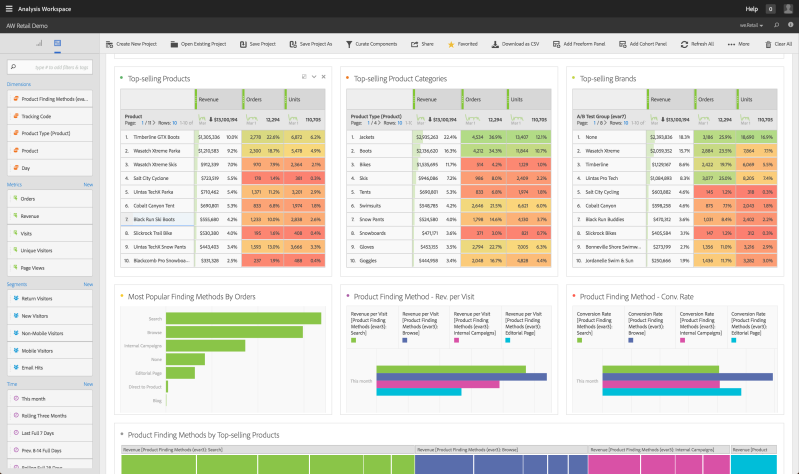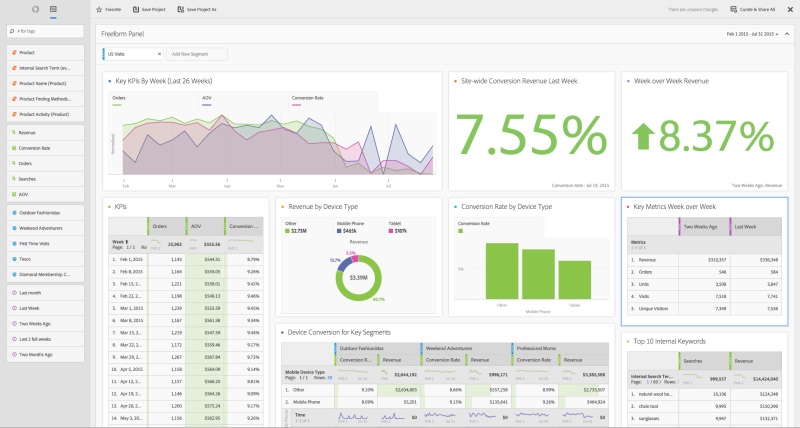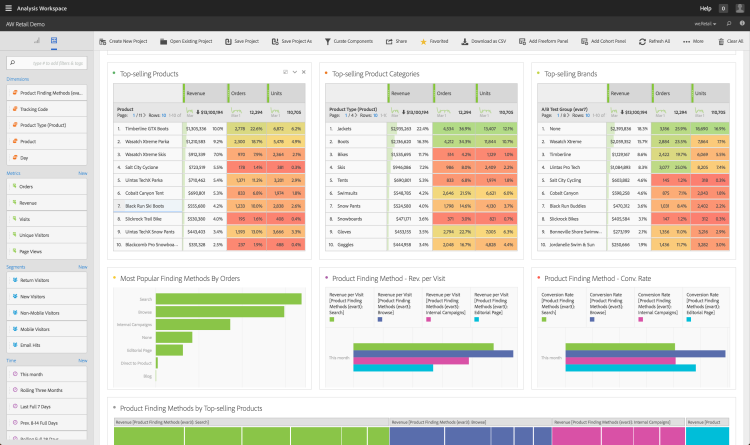Adobe is releasing a new Photoshop-inspired product to analyze customer journeys. According to the company, customers using the tool are achieving a 5 times lift in usable insights. There’s probably a good reason for that: Customer journeys are notoriously hard to track, measure, understand, and capitalize on with smart, timely marketing messages. Thus, any improvement is bound to be impressive.
Called Customer Journey Analytics, the new product is built to take advantage of the gigantic masses of data marketers hold from trillions of events across web, mobile, social, point-of-sale, and other channels — all of which is hard, if not impossible, to coalesce into actionable insight.
“There are two problems,” Adobe product marketing manager Nate Smith told me last week. “You can centralize data with data lakes, but even when it’s centralized, you have to interpret it, normalize it, standardize it […] and pull insights out of it.” So Adobe’s marketing software team took a page from the company’s design and creative team.

Above: Adobe’s new Customer Journey Analytics dashboard
A typical Photoshop file has multiple layers of pixels, all of which add up to a complete image. That’s how Adobe’s data science team is now envisioning customer journeys.
June 5th: The AI Audit in NYC
Join us next week in NYC to engage with top executive leaders, delving into strategies for auditing AI models to ensure fairness, optimal performance, and ethical compliance across diverse organizations. Secure your attendance for this exclusive invite-only event.
Customer journeys are typically displayed as two-dimensional maps — a ridiculously limiting metaphor that assumes people are simplistic and linear in their thinking, decision-making, and actions. In reality, customer journeys are often irreducibly complex, with multiple loops of back-and-forth thinking; invisible offline steps that include conversations with friends, colleagues, and family; and emotional responses to adjacent situations that brands never know about.
This new thinking is interesting — and some kind of poetic marriage of Adobe’s data-heavy marketing technology ventures and its creative roots — but the real question is whether it works.
Adobe can’t name customers, but one beta client reportedly took a two-month analysis process down to two minutes with the new product. According to Adobe, another was able to analyze 20 channels simultaneously.
“[This] created a massive data set, larger than anything Adobe had seen, and gave them an ability to report on cross-channel interactions for the first time,” Smith said. “They could see how people moved between the website, mobile app, support channels, and more — and produce insights that were much more in line with how their users behaved.”

Above: Adobe’s new Customer Journey Analytics dashboard
The new functionality works because Adobe has, over time, brought all the elements of its marketing cloud, the Adobe Experience Platform, into one platform. (Many elements were bought in separately, starting with Omniture, a web analytics tool, a decade ago.) This means an Adobe Experience Platform customer now has all, or at least most, of their data in one place.
With all the data accessible, Adobe says brands can now uncover high-performing customer journeys and then, presumably, try to optimize for more of them. Brands can also see how their physical stores and ecommerce efforts relate, correlate, or interfere with each other.
In addition, the new product enhances Adobe’s ability to do cross-platform de-duplication. In other words, it can understand that you’re the same person whether you use a retailer’s app on your phone while commuting home or their website from your laptop later that night.
Notably, Adobe utilizes a private device graph for that functionality. That’s different from some technology vendors that merge all their customers’ data together to build a larger device graph. A first-party solution with a private device graph is less likely to run afoul of the increasing amount of consumer privacy regulation governments are enacting.


